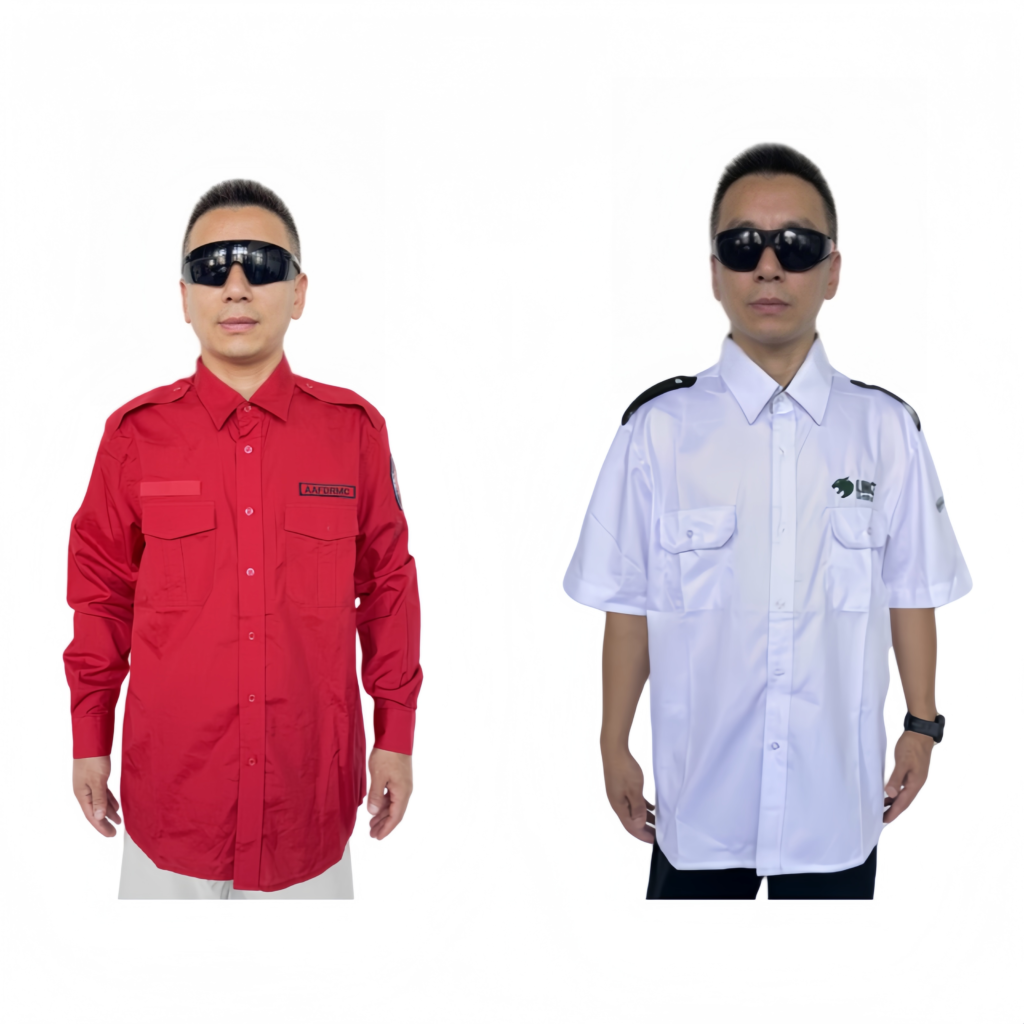Security Shirt : In security work, uniforms are not just clothes; they are symbols of identity, professionalism, and security. Among the most essential items, the security shirt (Security Shirt) stands out. A well-fitted security shirt not only enhances the professional image of the wearer but also provides comfort and convenience during daily duties. So, how should one choose a suitable security shirt?

Security Shirt Fabric selection: A balance between comfort and durability
Security personnel usually have to wear uniforms for long periods of time, so the fabric is the key factor determining comfort and durability.
- Cotton blend: Breathable and comfortable, with good sweat absorption, but prone to wrinkling.
- Polyester (polyester fiber): Resistant to wear and tear, not prone to fading, and easy to clean, but with slightly poorer breathability.
- Functional fabric: Durable, water-resistant, stain-resistant, fade-resistant, and suitable for all-day use.
Suggested tip: In summer, you can choose lightweight and breathable blended fabrics. In winter, you may consider thicker or lined styles.
Security Shirt Fabric Weight Selection
Security shirt Ultra-thin type (120 – 160 gsm)
Commonly seen in summer short-sleeved security shirts
- Advantages: Breathable, lightweight, and does not cause overheating even after prolonged wear.
- Disadvantage: The wear resistance is average. It is suitable for indoor use or light security tasks.
Medium type (160 – 220 gsm)
The weight range of the most common security uniform shirts
- Advantages: Combines comfort and durability, suitable for spring and autumn seasons or in air-conditioned environments.
- Disadvantages: It may be too hot in summer, and wearing it alone in winter is not warm enough.
Thick type (220 – 280 gsm)
Often used for long-sleeved security shirts in autumn and winter, or in environments where a certain level of windproof and thermal protection is required.
- Advantages: High wear resistance, sleek and stylish, good warmth retention.
- Disadvantage: Poor air permeability, not suitable for use in summer.
Functional reinforcement type (above 280 gsm)
Usually used for special tasks (for protection against cuts, fire resistance, and tactical purposes)
- Advantages: Strong safety performance, long service life
- Disadvantages: Heavy weight, reduced comfort of wearing
Tips
- Summer: We recommend lightweight blended or quick-drying fabrics with a weight of 140 – 170 gsm.
- Regular year-round uniform: Choose 180 – 210 gsm, suitable for most duty scenarios.
- Winter or high-intensity outdoor use: Recommended 220 gsm or higher. Can be paired with an inner layer for warmth.
Security Shirt Fit and Comfort: Suitable for both active and sedentary activities
Security work often requires walking, standing, and even dealing with unexpected situations. Therefore, the design of the clothing should meet the requirements for free movement and ease of movement.
- Fit but not tight: Avoid restricted movement.
- Reinforced stitching: More durable for frequently used areas such as the shoulders, elbows, and armpits.
- Flexible tailoring: Features such as the back pleat design can increase the space for movement.
Design Details: A Balance Between Practicality and Professionalism
On an anti-theft shirt, the details often reflect professionalism.
- Epaulette: Not only for decoration, but also for fixing the shoulder microphone of the walkie-talkie or for indicating the rank.
- Pockets: Convenient for storing small items such as notebooks, pens, and radio batteries.
- Hidden snap/zip design: Enhances appearance and safety, preventing buttons from falling off.
- Badge and identification position: Reserved space is designed for installing the company’s logo or security identification, enhancing the sense of authority.
Color and Visibility: The Communication of Safety Image
Dark blue, black, and grey are common colors for security uniforms. These colors have the following advantages:
- Steadiness: Conveys professionalism and authority.
- Resistant to dirt and wear: Reduces the pressure of daily cleaning.
- Uniformity: Facilitates team identification and enhances the overall image.
In some special places (such as hotels and clubs), light colors or custom colors are chosen to better blend in with the surroundings.
Considerations of Environment and Setting
Different duty scenarios have different requirements for security shirts:
- Outdoor security: Focusing more on wind resistance, water resistance, and sun protection functions.
- Indoor security: Emphasizes cleanliness, convenience, and comfort.
- Special tasks, such as traffic assistance or safety inspections, may require reflective strips or special markings.
الخاتمة
A suitable security shirt is not merely a set of work clothes; it is also an expression of responsibility and security. When choosing one, factors such as fabric, comfort, design details, color, and the working environment should all be taken into consideration. A proper uniform enables security personnel to present themselves in a more professional manner in front of the public and also enhances the efficiency and safety of daily work. If you have any requirements for security shirt customization, please contact Ningbo TOPRISE at any time. We will help you solve all customization problems.


